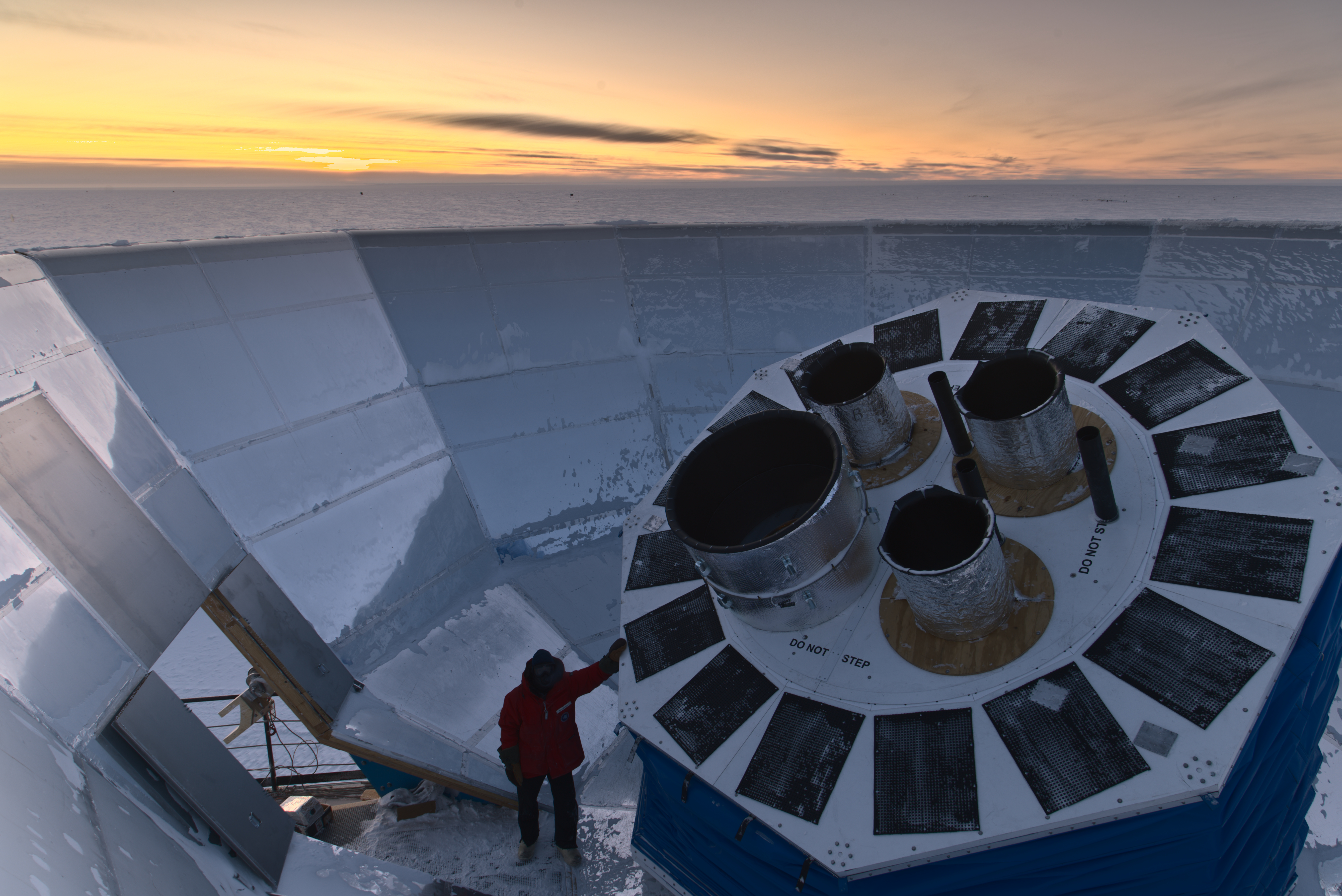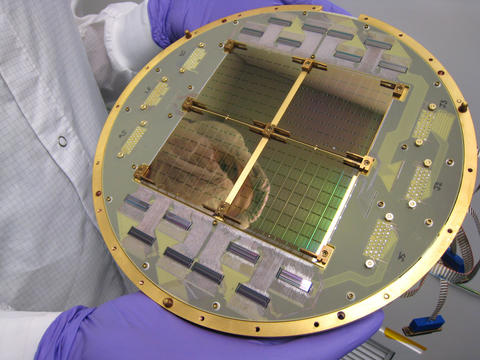BICEP and KECK Array

Telescope Details
Location
Amundsen-Scott South Pole Station
Purpose
Measure cosmic microwave background (CMB) polarization to search for signals of primordial gravitational waves that could confirm the theory of inflation.
NIST’s role
NIST made custom superconducting circuits, or chips, that amplify electrical signals generated by microwave detectors measuring primordial particles of light. The NIST chips, which along with the detectors are chilled to cryogenic temperatures, also assemble the signals into a sequential time stream that can be read by conventional room-temperature electronics.
The 16 NIST chips contain a total of more than 2,000 devices called SQUIDs, which measure the magnetic fields created in coils that carry and amplify the very small currents generated by the detectors. NIST researchers invented a method for wiring hundreds of SQUID signal amplifiers together to make large arrays of superconducting detectors practical — part of the cutting-edge technology that helps make the BICEP and KECK Array especially powerful.
Significant discoveries and current status
BICEP has set the most stringent upper limits of any single observatory on the size of gravitational waves produced in the earliest moments of the universe. Scientists have combined BICEP data with data from the European Planck satellite to lower the upper limit further. The observatory has produced the sharpest maps of the CMB to date.
The BICEP array has replaced the earlier BICEP telescope and the Keck Array with four upgraded telescopes mounted together. This array observes the CMB using over 30,000 bolometers (devices that use a temperature-dependent electrical resistance to measure the intensity of electromagnetic radiation) viewing in five wavelengths. With this increased observational power and the lessons learned from earlier versions, the BICEP Array is designed to pick out the tiny traces of CMB polarization due to inflation. Phased deployment of the array began in the 2019-20 austral summer season at the South Pole.
Other interesting facts
The South Pole is one of the best spots on Earth for microwave astronomy. At an altitude of more than 2,743 meters (9,000 feet), there’s little atmosphere above to disrupt incoming light from space. The thin air is extremely cold and dry, further minimizing atmospheric distortions. And BICEP can observe for one long polar night, providing nearly six months of darkness.
Supported by
National Science Foundation
Team members
California Institute of Technology and Jet Propulsion Laboratory, Harvard University, NIST, Stanford University, University of British Columbia, University of Chicago, University of Minnesota, University of Toronto and University of Wales Cardiff
Media

Contacts
-
(303) 497-6164

